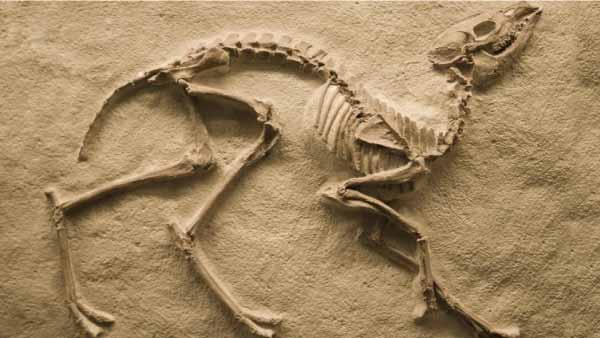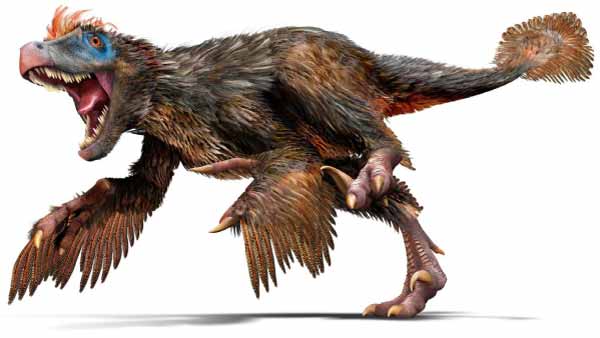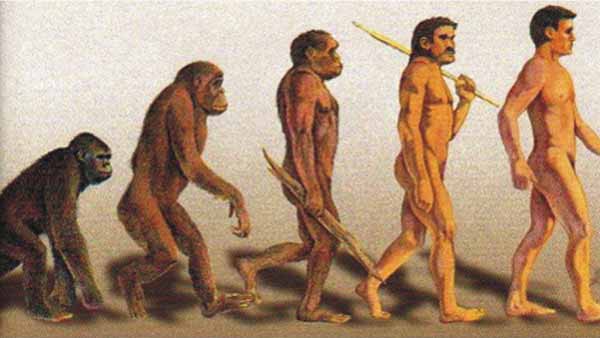Fossils
Fossils are remains, traces or vestiges of organisms that lived in the past and have been preserved in the earth’s crust over time. These can be bones, teeth, shells, leaves, branches, pollen, footprints, droppings and other debris that have been buried under layers of sediment, rocks and earth.
Fossils are important for science because they allow us to reconstruct the history of life on Earth. Through the study of fossils, scientists can determine what plants and animals of the past looked like, how they evolved, and how they related to each other. They can also use fossils to determine the age of rocks and the sediment layers in which they are found, which in turn helps to understand Earth’s geological history.
Fossils are formed through fossilization processes, which can be mineralization, permineralization, carbonization, printing, and preservation in amber. These processes involve the replacement or preservation of the organic tissues of the original organism with minerals or more resistant materials.
Fossils can be found in different types of rocks and in different places around the world, from deserts and mountains to seabeds and glaciers. The most important fossil deposits are usually those that contain fossils of organisms that were abundant, diversified or had great evolutionary importance.
Fossilization process
Fossilization is the natural process by which the remains or vestiges of living organisms are preserved in the earth’s crust. The following describes the main types of fossilization:
Mineralization
This process occurs when organic debris is deposited in an environment rich in minerals, such as sediments or volcanic ash. Over time, minerals infiltrate the body’s tissues, replacing organic matter and turning into rock.
Per mineralization
This process is similar to mineralization, but in this case, the minerals are deposited in the empty spaces of the body’s tissues, forming a mineralized replica of it.
Carbonization
This process occurs when organic debris is compressed under sediment or rock, which causes the expulsion of water and gases, and the concentration of organic components. Organic matter becomes charcoal or a similar substance, leaving an impression of the organism in the rock.
Impression
This process occurs when the organism leaves an imprint or impression on the surface of the rock. It can be a foot print, a tooth mark, a leaf, etc.
Conservation in amber
This process occurs when organisms become trapped in the resin of trees and fossilize inside the amber.
It is important to note that not all organisms fossilize with the same ease, since there are factors that can affect their preservation, such as the type of organism, the environment where it is found, and the time elapsed since its death.
Fossils in bones
Bone fossilization is a common type of fossilization. Mineralization is the main process that occurs in bone fossilization. When an animal dies, its body begins to decompose and soft tissues are quickly consumed by scavengers and microorganisms. However, bones can remain for a long time if they are protected from the elements and if they are in an environment suitable for fossilization.
In general, for bones to fossilize they are required to be quickly buried by sediment or surrounding material. As sediments accumulate on bones, they can prevent them from decaying and preserve them over time. Over time, minerals from sediments can infiltrate bones, gradually replacing organic tissues and turning them into fossilized rock.
The degree of bone preservation can vary widely, from partial or fragmented bones to complete skeletons. In addition, the bones of different animals fossilize with different ease, depending on the composition of the bones and their density.
Bone fossilization can provide a wealth of information about animals from the past, such as their size, shape, diet, mobility, and evolution. Fossilized bones can also be dated to determine the age of rocks and the sediment layers in which they are found, which in turn helps to understand Earth’s geological history.
Fossils in teeth
Teeth are structures that fossilize relatively easily due to their hardness and resistance to decay. The process of fossilization of teeth is similar to that of bones, and mineralization is the main process that occurs in the fossilization of teeth.
When an animal dies, the teeth can be exposed on the surface of the soil or buried by sediment. If they are buried quickly, they are protected from erosion and the action of the elements, which facilitates their preservation. Over time, minerals from sediments can infiltrate teeth, gradually replacing organic tissues and turning them into fossilized rock.
Fossilized teeth can provide a wealth of information about animals of the past, such as their size, shape, diet, and evolution. In addition, teeth can be used to date rocks and the sediment layers in which they are found, which in turn helps to understand Earth’s geological history.
Importantly, the fossilization of teeth can also be affected by certain factors, such as exposure to weathering, erosion and the action of chemical and biological agents. Therefore, not all teeth fossilize equally easily, and the quality of preservation can vary widely.
In shells
Shells are hard outer structures that protect many marine and terrestrial organisms, such as mollusks and reptiles. Shells fossilize relatively easily due to their resistance to decay and erosion.
The process of fossilization of shells is similar to that of bones and teeth, and mineralization is the main process that occurs in the fossilization of shells. When an animal dies, its shell can be exposed on the surface of the ground or buried by sediment. If it is buried quickly, it is protected from erosion and the action of the elements, which facilitates its preservation. Over time, minerals from sediments can infiltrate the shells, gradually replacing organic tissues and turning them into fossilized rock.
Fossilized shells can provide valuable information about organisms of the past, such as their size, shape, evolution, and environment. In addition, shells can be used to date the rocks and sediment layers in which they are found, which in turn helps to understand the geological history of the Earth.
Importantly, the fossilization of shells can also be affected by certain factors, such as exposure to weathering, erosion and the action of chemical and biological agents. Therefore, not all shells fossilize with the same ease, and the quality of preservation can vary widely.
In excrement
Fossilization of droppings, also known as coprolites, is a less common type of fossilization but can provide important information about the diet and behavior of animals of the past.
When an animal defecates, droppings can become exposed on the surface of the soil or be buried by sediment. If they are buried quickly, they are protected from erosion and the action of the elements, which facilitates their preservation. Over time, minerals from sediments can infiltrate the droppings, gradually replacing organic materials and turning them into fossilized rock.
Fossilized coprolites can provide valuable information about the diet and behavior of animals of the past. They can be analyzed to determine what types of food the animals consumed, whether they were herbivores, carnivores or omnivores, and in some cases, even the remains of specific foods found in their digestive system can be identified.
Importantly, fossilization of excrement is a less common process than fossilization of bones, teeth, and shells, and that the quality of coprolite preservation can vary widely. In addition, the identification of fossilized coprolites can be difficult, as they can be confused with ordinary rocks or with other objects similar in appearance. Therefore, careful and detailed analysis is required to correctly identify fossilized coprolites and extract the valuable information they contain.
Fossils in footprints
Fingerprint fossilization, also known as ichnophosilization, is a process in which the impression left by the feet or other parts of the body of animals in sediments is preserved.
When an animal walks, runs, or crawls on a soft substrate such as mud, it leaves traces that can be preserved if rapid sediment cover occurs. Over time, these sediments compact and solidify, preserving the footprints as fossil marks on the rocks.
Fossilization of footprints can provide valuable information about the size, shape, and behavior of animals from the past. In addition, fossilized footprints can help reconstruct ancient ecosystems and understand the history of life on Earth.
Importantly, fingerprint fossilization is a less common process than fossilization of bones, teeth, and shells, and that the quality of footprint preservation can vary widely. Traces can be destroyed by erosion, exposure to weathering, or by the action of chemical and biological agents. Therefore, not all footprints fossilize with the same ease, and the quality of preservation can vary widely. In addition, identifying fossilized footprints can be difficult, as they can be mistaken for other marks or similar impressions on rocks. Therefore, careful and detailed analysis is required to correctly identify the fossilized footprints and extract the valuable information they contain.
Leaf fossils
Leaf fossilization is a process in which the structure of plant leaves in sedimentary rocks is preserved over geological time. This process can provide valuable information about environmental and climatic conditions in the past, as well as about plant evolution.
The leaves can fossilize in various ways. In some cases, leaves can become trapped in sediments at the bottom of water bodies such as rivers or lakes. Over time, sediments compact and solidify, forming sedimentary rocks. The structure of the leaves can be preserved within these rocks. In other cases, the leaves can be buried by volcanic ash, which protects them from decay and allows them to be preserved as fossils.
Leaf fossilization can provide valuable information about plant evolution and their adaptation to different environmental conditions. For example, the shape and structure of the leaves can indicate whether the plants were adapted to dry or wet conditions, or whether they were plants from hot or cold climates. In addition, fossilized leaves can help reconstruct the composition and structure of ancient forests, as well as identify changes in vegetation over geological time.
Importantly, leaf fossilization is a less common process than fossilization of other types of organisms, and that the quality of preservation can vary widely. In addition, identifying fossilized leaves can be difficult, as they can be confused with other similar structures in rocks. Therefore, careful and detailed analysis is required to correctly identify fossilized leaves and extract the valuable information they contain.
Fossils in branches
Branch fossilization is a process in which the structure of plant branches and stems is preserved in sedimentary rocks over geological time. This process can provide valuable information about the evolution of plants and the history of life on Earth.
The branches can fossilize in several ways. In some cases, branches can become trapped in sediments at the bottom of water bodies such as rivers or lakes. Over time, sediments compact and solidify, forming sedimentary rocks. The structure of the branches can be preserved within these rocks. In other cases, the branches may be buried by volcanic ash, which protects them from decay and allows them to be preserved as fossils.
Branch fossilization can provide valuable information about plant evolution and their adaptation to different environmental conditions. For example, the structure of the branches can indicate whether the plants were adapted to dry or wet conditions, or whether they were plants from hot or cold climates. In addition, fossilized branches can help reconstruct the composition and structure of ancient forests, as well as identify changes in vegetation over geological time.
Importantly, branch fossilization is a less common process than fossilization of other types of organisms, and that the quality of preservation can vary widely. In addition, identifying fossilized branches can be difficult, as they can be confused with other similar structures in rocks. Therefore, careful and detailed analysis is required to correctly identify the fossilized branches and extract the valuable information they contain.
Fossils in pollen
Pollen fossilization is a process in which the structure of plant pollen grains in sedimentary rocks is preserved over geological time. This process can provide valuable information about plant evolution, environmental and climatic conditions in the past and can also be useful in identifying the different types of plants that lived in the past.
Pollen is produced by plants as part of the process of sexual reproduction and is transported by wind, water or animals through pollination. When pollen grains are deposited in sediments, they can be preserved as fossils. Pollen fossilization occurs under special conditions, such as humid and poorly oxygenated sedimentary environments, such as in swamps, lakes and seabeds.
Pollen fossilization can provide valuable information about the evolution of plants and their adaptation to different environmental and climatic conditions in the past. In addition, analysis of fossilized pollen grains can help reconstruct the history of changes in vegetation and climate over geological time.
The study of fossilized pollen grains is known as palynology and is used to reconstruct ancient ecosystems and climate changes on Earth over millions of years. Palynological analyses are also useful in identifying different types of plants and for dating sedimentary deposits.
Importantly, pollen fossilization is a relatively common process and that the quality of preservation is generally very high, making fossilized pollen grains an important source of information for scientists.
Places where fossils have been found the most
Fossils have been found in many different places around the world. Some of the most important places for fossil discovery include:
Marine sediments
It this are one of the most common places to find fossils, especially in areas where large amounts of sediment have been deposited over geological time. Marine fossils, such as ammonites and trilobites, are common in these sediments.
Sedimentary rock deposits
Sedimentary rock deposits, such as sandstones and shale, are another common place to find fossils. These rocks are formed from the accumulation of sediments and may contain fossils of animals and plants that lived in the region in the past.
Coal deposits
Charcoal is a form of sedimentary rock that is formed from the accumulation of plant matter. Coal deposits often contain fossils of plants that lived in the past.
Amber
Amber is a fossilized resin found in sedimentary rocks that often contains fossils of insects and other small organisms that were trapped in the resin when it was sticky.
Caves and ice deposits
Caves and ice deposits can be great places to find well-preserved fossils, especially if conditions inside the cave or ice are cold and dry enough to preserve the remains.
Fossil deposits on cliffs and on the surface
The exposed rock layers on cliffs and land surfaces are also places where fossils can be found. These deposits may be especially important for the discovery of fossils of large land animals, such as dinosaurs and prehistoric mammals.
Importantly, fossils can be found in many other places besides those mentioned above. In addition, fossil discovery is a constant activity and scientists continue to find new fossils around the world as they continue to explore and excavate different geological areas.
Geographical places with the most fossils found
The geographical locations where more fossils have been found vary depending on the type of fossil and the geological epoch in which the organisms lived. However, here are some examples of places where important fossil discoveries have been made:
United States
The United States is an important location for the discovery of fossils of dinosaurs and other prehistoric animals. Major areas include Dinosaur National Monument in Utah, Yellowstone National Park in Wyoming, and Badlands National Park in South Dakota.
China
China is an important location for the discovery of fossils of dinosaurs and other prehistoric animals, including the famous feathered dinosaurs. Some of the most important sites include Yixian Formation in Liaoning Province and Zhucheng Formation in Shandong Province.
Argentina
Argentina is an important location for the discovery of dinosaur fossils, including some of the largest and most complete in the world. The Patagonia region of Argentina is especially rich in fossils, with many important excavation sites in the province of Neuquén.
Canada
Canada is an important location for the discovery of fossils of marine organisms, including the famous trilobite fossils. Dinosaur National Park in Alberta is also an important location for the discovery of dinosaur fossils.
Morocco
Morocco is an important place for the discovery of fossils of dinosaurs and other prehistoric animals. The Kem Kem site in Morocco is especially rich in dinosaur fossils, including the giant theropods Spinosaurus and Carcharodontosaurus.
Importantly, these are just a few examples of places where important fossil discoveries have been made and that fossils can be found all over the world. In addition, discoveries of new fossils are constant, and scientists continue to explore and excavate different geological areas in search of new finds.


